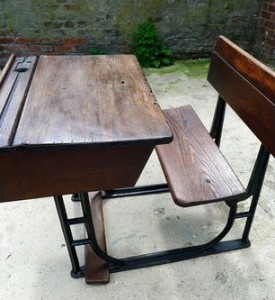Schooldays

An article in today’s New York Times on classroom chairs reminded me of my schooldays. As far as I remember, we had wooden desks with a built in bench seats, attached to the floor. The desk-top, usually carved with a chronicle of interesting graffiti, was sometimes hinged with a storage space beneath that we never used. We didn’t used the hole in the top, which was made to hold an ink-well, either. The desks were sturdy and not particularly comfortable—they weren’t intended to be. The Times piece is full of fluff about how different classroom chairs might improve learning,

